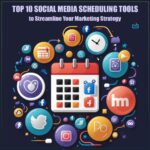The Foundation of Informed Decision-Making
In the world of marketing research, data is king. Every successful marketing campaign, product launch, or market expansion is backed by a treasure trove of information. While primary data collection methods are indispensable, secondary data plays a crucial role in refining strategies, understanding trends, and making informed decisions. In this article, we delve into the realm of secondary data in marketing research and explore its significance.
What is Secondary Data in Marketing Research?
Secondary data, in the context of marketing research, refers to existing data that was not collected by the researcher but is utilized to address a research problem. This data can come from a myriad of sources, including industry reports, government publications, academic studies, and even social media. It serves as a valuable resource for researchers, offering a broader perspective and saving time and resources compared to primary data collection.
Sources of Secondary Data
The sources of secondary data are as diverse as the data itself. Researchers can tap into government sources like census data, academic institutions, libraries, market research firms, and even their own organization’s historical data. Online databases, subscription services, and public records provide an abundance of secondary data waiting to be harnessed.
Types of Secondary Data
Secondary data can be categorized into two primary types: internal and external. Internal data originates within an organization and includes sales reports, customer records, and historical marketing data. External data, on the other hand, comes from sources outside the organization and includes industry reports, government statistics, and data from third-party market research firms.
Advantages of Secondary Data
The utilization of secondary data offers a multitude of advantages. Firstly, it’s cost-effective. Researchers can access a wealth of data without incurring the expenses of data collection. Secondly, it’s time-efficient. Secondary data is readily available, saving the time required for primary data collection. Additionally, it provides historical context, aiding in trend analysis and long-term decision-making. Finally, the data often comes from reputable sources, enhancing its reliability.
Limitations of Secondary Data
While secondary data is a valuable tool, it is not without limitations. Data may not align perfectly with the specific research question, leading to potential biases. Researchers have limited control over data collection methods and the quality of the data. It may also be outdated, and the data’s source might lack transparency.
Research Methodologies Utilizing Secondary Data
Secondary data is employed in various research methodologies, including content analysis, meta-analysis, and trend analysis. Content analysis involves examining existing texts and documents to draw insights, while meta-analysis combines data from multiple studies to draw overarching conclusions. Trend analysis uses historical data to identify patterns and make predictions.
Challenges and Considerations
Researchers must navigate challenges when working with secondary data, such as data authenticity and relevance. They should critically assess data sources, confirm the data’s credibility, and consider any potential biases. Additionally, understanding the context in which the data was collected is crucial for accurate interpretation.
The Synergy of Primary and Secondary Data
Effective marketing research often involves a combination of primary and secondary data. Primary data provides specific insights tailored to the research question, while secondary data offers a broader view and historical context. This synergy enables researchers to make well-informed decisions.
Related Articles
Conclusion
In the dynamic world of marketing research, secondary data serves as a pillar of informed decision-making. When harnessed effectively, it can illuminate trends, validate hypotheses, and provide valuable context. Researchers who master the art of utilizing secondary data unlock a wealth of opportunities for understanding markets, consumer behavior, and the ever-evolving landscape of the business world.



